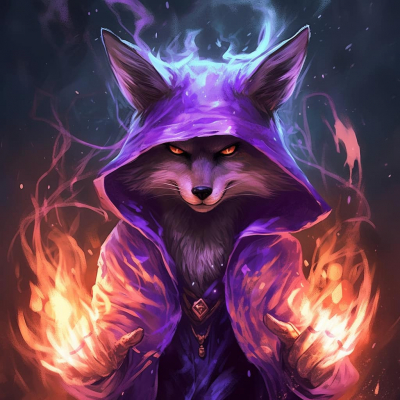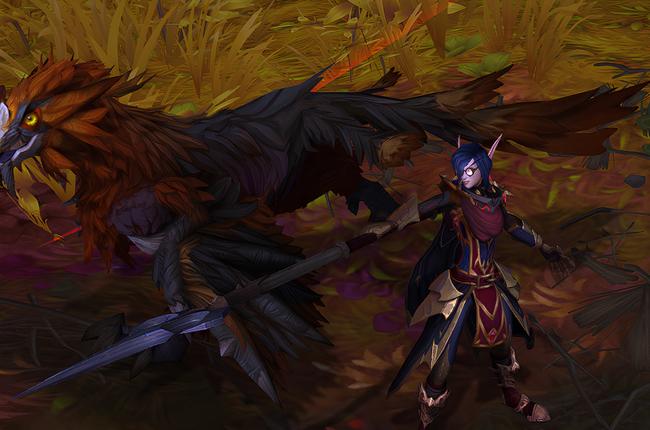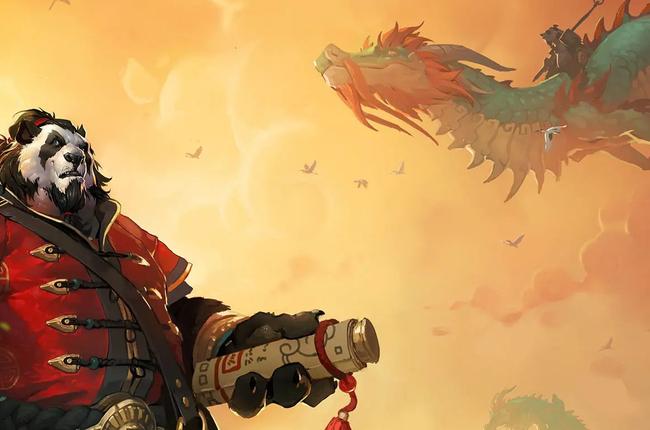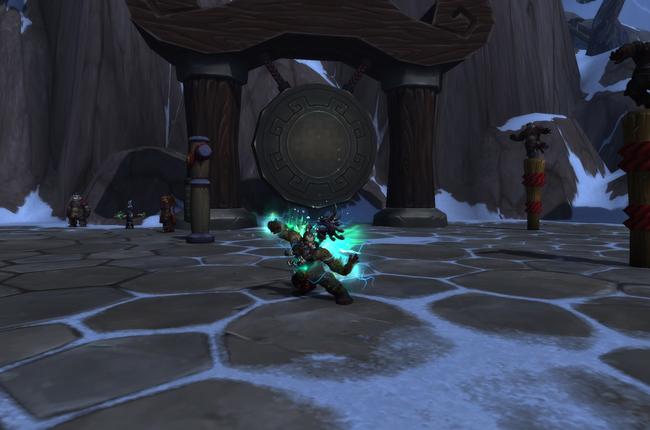A Retrospective on Blood Death Knight in Dragonflight & War Within Wishlist - Editorial
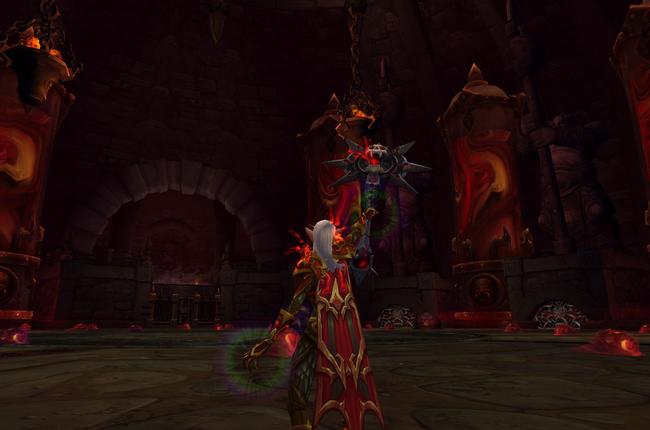
Retrospective and Wishlist for Blood Death Knight in Dragonflight
With the sun setting on Dragonflight and The War Within on the horizon, our Blood Death Knight Writer, Mandl, offers a retrospective highlighting Blood's journey in Dragonflight and shares their hopes for the spec's next evolution with a War Within Wishlist.
Dragonflight Retrospectives & War Within Wishlists
- Frost DK
- Havoc DH
- Restoration Druid
- Augmentation Evoker
- BM Hunter
- Fire Mage
- Mistweaver Monk
- Protection Paladin
- Assassination Rogue
- Subtlety Rogue
- Elemental Shaman
- Restoration Shaman
- Affliction Warlock
- Blood Retrospective & War Within Wishlist
As Dragonflight winds down and developers and players prepare for The War Within, a review of how Blood Death Knight fared across the expansion is somewhat necessary. Between the introduction of a completely new talent system, tier sets, new encounter mechanics, and entirely new specializations, Dragonflight has been a bit of a roller-coaster, and unfortunately, Blood was one of the specs with the lowest amount of impactful change.
It wasn't all bad, though, as we'll explain below. It just really, really needs a couple of things: a coherent vision going forward, and a more cohesive, engaging set of talents.
The Good
A Functional, Good, Useful But Shallow Spec
It is hard to pin fault on the functional, albeit extremely shallow core that Blood Death Knight operates on. Whilst it may not be engaging in terms of rotational depth or extremely rewarding feedback loop, it does go by its ability to withstand almost anything thrown at it. And, in that respect, its shallow core is an advantage: virtually anybody can pick up Blood, mash buttons, and get the feeling that they're doing OK without getting flattened. And if they bring it for a fight that abuses some of its toolkit, it gets even better.
Death Strike essentially works against everything and there are very few scenarios where the solution isn't "plan your cooldowns and press Death Strike after the hit". Dragonflight's encounter design has showcased this trend time and again: between cases like add management and mortal strike handling on Broodkeeper Diurna, the ability to make an entire mechanical overlap disappear on Sarkareth, and the numerous cases where blood simply works on every other fight, this expansion has been, at least from a player representation, a success. It may not have been at every level, and particularly in Mythic+ with the presence of specs that interact with their group rather than just existing, but it was at least a modest success.
Fundamentally, it works. The core of the spec functions, and whilst our Dragonflight spec tree is composed of over 80% recycled spell effects, its functional, simple, and disjointed core keeps it going - as it has done for the past three expansions. To give you an idea of the recycling, this is our spec tree:
| Legion-era Rework Spells | Legion-era Borrowed Power | BfA | Shadowlands | Dragonflight - New! | |
| Unchanged throughout the entire expansion | In red | In gold | In blue | In purple | In white |
Beyond being unchanged throughout the entire expansion, the color annotation should highlight the main issue. Legion-era rework spells are denoted in red, Legion-era borrowed power in gold, BfA in Blue, Shadowlands in purple and Dragonflight - new! - stuff in white. I will get into more depth on this in another section, but it does serve to highlight how little the spec has changed, and more importantly, how almost every new addition was a passive addition to an existing spell, with the notable exception of Coagulopathy (more of these, please!).
The prevalence of fights favoring Death Grip is also something worth highlighting, to the detriment of our DPS Death Knight brethren. This is amplified further by how accessible Death's Echo is on the class tree. In Mythic+, being able to stop dangerous casts with Death Grip has been amazing where possible, and in a way, it is sad that so many casts still have no cooldown or have cooldowns that start when the spell successfully casts. I highlighted this throughout Season 1 and the feedback was heeded in Season 2, but unfortunately, Season 3 partially reverted this trend.
Finally, Abomination Limb being kept on from Shadowlands was a massive positive. It was by far the most unique of the four covenant abilities for Blood, and seeing it being taken on and what it has enabled players to do during Dragonflight has been a genuinely positive addition to the spec - albeit one with no real talent or ability interaction beyond just removing 1-3 Marrowrend casts every 2 minutes.
The Bad
Breadth of an Ocean, Depth of a Puddle
Put simply: almost every single talent point on the Blood Death Knight spec tree falls into one of three categories:
- Mandatory (Everlasting Bond, Coagulopathy, Sanguine Ground, Tombstone, to name a few): you either take it because it unlocks a massive amount of player power, or path through it to reach another mandatory talent as there is no other choice. The best example is Crimson Scourge. In regular gameplay, you rarely, if ever, see a Crimson Scourge proc, however, in order to reach Coagulopathy, the only path you can take involves picking Crimson Scourge and one of the two talents that increase the value of a proc you don't even get to proc until 40 seconds into a fight.
- A highly situational pick, such as Gorefiend's Grasp on Mythic Fyrakk.
- Filler, passive, non-impactful talents that you triage by raw power and pick the most impactful, not because it is good, but because it is the least bad.
Shattering Bone being the poster child for this; it's a massive amount of damage over the course of most encounters, but it has zero gameplay value. It's a lot of damage, and that's it.
All your choices in talents boil down to the last two categories, and there is no other choice in the matter. There is nothing left to make you go "Wow! I can play a Hypothetical Second Blood Death Knight Build that leverages different spells!" No matter what happens, your rotation is completely unchanged in terms of global priorities. There is no breath of fresh air, no real change in priority, no real change in gameplay; all there is, is a very simple problem to solve, and the solution inevitably ends up being a variation on whether to pick 0/2, 1/2, or 2/2: Red Thirst, which is directed by encounter and cooldown planning and where you scavenge a point from another low-impact node to get 2/2, or Bloodworms, or Voracious which is mostly raid v. M+. That's it. These are your most impactful choices.
It is not through fault of trying, either. There was a theoretical gain in playing Blood Tap as a rotational variation for the entire expansion, but the benefit - up to 2 bonus runes per minute - is barely worth the effort, and its value is diminished further by having to path through Leeching Strike. It also does not fundamentally change the flow of Blood Death Knight, it simply adds an additional, minor source of bonus Runes. The same is true for Bonestorm; you can theoretically add it and it can theoretically lead to an offensive gain in a couple of situations, but all it changes is one GCD every minute. Calling this "depth" and "diversity" would be a travesty.
Having played all tanks this expansion and seen reworks of other talent trees to remove this sort of dilemma, it is shocking that something this stale was allowed to last the entire expansion without a single change. Unlike other specializations having completely different build archetypes ("Arcane" bear vs. "Thrash" bear, to name likely the lowest-impact example), Blood effectively has no real diversity. You'll go into every boss with the same toolkit and the same rotation because the talent tree doesn't prevent a different build - it doesn't even have the concept of one.
Balancing Woes
Dragonflight was not without hurdles, numerically speaking. In order to anticipate this in the future, we unfortunately must look at the past.
Offensively, we highlighted the severe lack of single-target damage the spec had compared to the competition in Beta, but it is not until Aberrus that this got sorted - with successive, week-after-week 5-10% global spec aura adjustments instead of the nearly-pure single target changes that were needed. This, in turn, cranked the AoE damage Blood dealt from a somewhat healthy amount to a very unhealthy amount, since the spec aura effect buffs all class and spell abilities indiscriminately. Between 10.0.7 and 10.2, Blood gained 37% damage through spec aura adjustments alone.
Below the surface, a number of glaring issues were reported as problematic and never acted on. To name the most obvious, Bonestorm's AP coefficient was never adjusted between Shadowlands and Dragonflight to account for the presence of Improved Death Strike on the class tree, thus giving Death Strike an advantage in terms of damage per point of RP. Functionally, Coagulopathy working strictly off of RP spent on Death Strike meant that Bonestorm languished for the entire expansion as an extremely high risk, extremely low reward capstone talent with a near-zero pick rate across all content.
The Ugly
The Elephant in the Room: Spec Identity Bankruptcy
Large swaths of this section will likely also be applicable to Frost and Unholy, as the root stems from a common point in history. And, hopefully, in order to avert yet another problem, it is worth stating yet again: the damage that the Legion class rework did to Death Knight overall still exists, and a small but very important number of band-aids currently prevent the entire class from falling apart.
For Blood specifically, instead of being given a debuff-based classic Combo Point system like Unholy, the original idea was an attempted recycling of Bone Shield into a maintenance buff, and a very important resource change: Death Strike's cost was changed from two runes (one Frost, one Unholy) to 45 Runic Power. Along with this, almost every interaction from the kit, either due to its resource system (such as Plague Leech) or from the spec's mechanical depth, disappeared overnight, never to be seen again. The prime directive then became managing what is effectively a tax (Bone Shield), and then finding ways to generate and spend as much Runic Power as possible on Death Strike, instead of balancing different runes in order to cast Death Strike when needed.
Blood does not have a single useful proc or interaction in its base kit. We only indirectly interact with Bone Shield through effects that give other things, and our entire goal is to minimize its use; we effectively have no reason to care for Crimson Scourge (and waste two talent points picking it + Relish in Blood to path down the tree) because Death and Decay alone justifies its uptime. Other effects are similar, with the same outcome: no rotation diversity.
A large number of glaring problems with the rework itself ended up getting minor changes between Legion and today, but only insofar as to remove critical problems. For example, until Shadowlands, it was impossible to generate Bone Shield charges without being in direct melee range of a boss. This was first band-aided with either Crimson Rune Weapon or Abomination Limb, and then later "properly" fixed by giving Death's Caress an additional effect. This is very welcome as it massively helped set up pulls after a death, but did not fundamentally shift the needle.
Beyond this, no fundamental change to Blood has occurred in the past three expansions, despite numerous opportunities to do so. Our Dragonflight talent tree is a mish-mash of old effects, designed to strap even more power to already-existing buttons instead of building spec depth. Where the interaction with resources could have been deepened by adding additional hooks to Heart Strike and Death Strike (which was sort of done with the Season 3 set, albeit with the lowest possible effort - a boring damage amp), the design decision was instead to just amp the Runic Power cycle to 11 and turn Blood into a GCD-locked spec. Where a number of gameplay hooks could have been built around Bone Shield, the lowest-effort solution in the form of Shattering Bone was chosen. This was a boring and mostly passive damage proc every time a Bone Shield is consumed, which was tripled while you stand in your own Death and Decay...
All of this is in sharp contrast to other tank specs. Play a Guardian Druid for a day, and you'll be able to experience the joys of spells that interact with each other - Tooth and Claw, Vicious Cycle (and both of their interactions with Raze), and Dream of Cenarius all being good examples of how to build interesting effects that aren't just boring damage amps. Play a Protection Warrior and you'll get to discover the depth of gameplay that Anger Management and Violent Outburst offer, to name just a few effects. Where other tanks gained depth, Blood simply got more shallow, and this is further confirmed by how it is essentially impossible to find a hypothetical second playstyle in the talent tree. It simply isn't there - no matter what you do, you end up with the exact same core, the only exception being whether you are daft enough to not pick Tombstone and lose out on a massive amount of value from Insatiable Blade and the inability to path to Shattering Bone.
Death and Decay, The Swiss Army Knife of Blood Death Knight
Death and Decay started out as an AoE damage ability in its original form. Over the years, its focus shifted and it became a vessel for other effects instead of standing on its own, with Death's Due acting as a pilot for the idea.
Dragonflight amped the number of effects tied to Death and Decay to 11:
- Unholy Ground causes you to gain 5% haste while in your own Death and Decay
- Sanguine Ground grants you 6% damage and 5% healing received while in your own Death and Decay
- Shattering Bone's damage is tripled while you are in your own Death and Decay
Death and Decay was effectively repurposed from something you cast on the enemies in order to deal damage into something you cast for yourself, and where an enemy being in it is an added bonus and not a rotational directive. This value proposition is so oppressive that it compels players to ignore the existence of an entire set of talent points that they deliberately pick (Crimson Scourge) because gaming these procs would be a net loss over just sending Death and Decay whenever the previous one disappears.
The trend for War Within seems to continue, judging by the preview of the San'layn hero talents, with another 5% physical damage reduction and a 10% additional chance to proc Vampiric Strike while in Death and Decay.
The worst part in all this? It's you getting the buffs. Enemies could not be in it and it literally makes no difference other than the meager amount of damage Death and Decay does, and the snare from Grip of the Dead if you play it. At no point is an enemy required to be in Death and Decay for all of this to function. If there's something that should scream "there's a problem", it is this.
Tombstone, TheOtherSwiss Army Knife of Blood Death Knight
Back in Shadowlands, with the advent of Endless Rune Waltz, Tombstone went from being a completely useless button to a mandatory staple in every talent build because it played a borderline mandatory role in allowing you to easily roll Endless Rune Waltz (the 9.2 tier set effect) from Dancing Rune Weapon to Dancing Rune Weapon for a total of 40% bonus strength at all times. Losing this stack was a crushing loss - requiring 14 Heart Strike casts to recover it. The main reason Tombstone never saw play before this is because it competed with Blooddrinker (damage vs. no damage) and Heartbreaker (more Runic Power, whereas Tombstone by itself was RP-neutral at best).
When Dragonflight launched, the following effects were added to Tombstone:
- Shattering Bone causes Tombstone to deal 207.9% AP damage before spec aura to every target within range
- Insatiable Blade causes Tombstone to grant 25 seconds of cooldown reduction on Dancing Rune Weapon
- The Season 1 tier set caused Tombstone to refund a Rune on use
This is the same problem as Death and Decay: instead of building meaningful depth in order to make an active ability on the talent tree good by itself (while not being a default pick), if you strap enough random power and disjointed interactions on it, you can force its use everywhere. The most worrying part of this is that you can justify these changes to Tombstone as a success - it went from 0% pick rate to 100% pick rate overnight. Talent fixed, let's pack up shop!
The other choice node talent, Mark of Blood, almost feels like it was added because of a mandated requirement in the number of choice nodes. It is, numerically speaking, laughably weak on its own (at best, it would grant you < 1.4% max HP per second per enemy marked, up to 2.5 enemies at any given time - assuming they only auto-attack). No other talent on either the class or spec tree interacts with it, it costs no resources, generates no resources, deals no damage, does nothing other than applying a debuff to a target, and actively costs a GCD for the privilege. This lack of interaction with anything seals its fate just by virtue of how overloaded with secondary effects Tombstone is, and further serves to highlight just how disparate and, frankly, un-designed our talent tree is.
No Friendly Interactions
By this section's title, I mean with others: your only point of contact with anybody else at any point during any content is Anti-Magic Zone, and that in itself is a somewhat costly talent point on the class tree. This is particularly evident when Afflicted week rolls around, and in sharp contrast with a number of other tank specializations. While certain specs arguably have too much, Blood is firmly in the "too little interaction with other players" camp.
A couple of cool ideas exist, either as PvP talents or as previous spells. For example, Spellwarden would make a fantastic PvE talent instead of Blood Feast if granting it to a friendly player also halved its size.
Conclusion, and The Way Forward
Blood, much like the two other Death Knight specs, is in pretty dire need of brainstorming in terms of vision, ideally sooner rather than later. The current toolkit, whilst functional has proved to not lend itself at all to any kind of depth. Functionally, it encourages the centralization of player power along its only three available hooks - Bone Shield, Death Strike, and Death and Decay, and this is a trend that was evident throughout the entirety of Dragonflight. This is a systemic problem with the spec as there have been very few efforts to deepen any other gameplay loop. A number of positive experiments (such as attempting to build an AoE RP generator with Swarming Mist) were, sadly, not brought forward when they would have helped diversify the talent builds, or at least replaced some of the less desirable generic bonus damage talents present on the current talent tree.
Effects promoting synergy between abilities should be actively thought of and designed in order to form a more cohesive, less one-directional spec. On a hugely positive note, one of the San'layn Hero Talents attempted to do this with Infliction of Torment. This talent point's idea is on point, but falls short as it is just flat damage, but the idea is there - actively consume your Blood Plague rotationally in order to generate something. Building interactions like these that either promote healthy synergies or encourage diversity on a spec that currently has no talent diversity - this would be a worthwhile goal.
None of this should be news - in fact, I gave almost the same feedback during the Dragonflight alpha. At least, on the upside, assuming nothing goes awry with Hero Talents, the spec functions and shines where its toolkit is put to good use. While the core of the San'layn Hero talent tree doubles down on strapping more power to spells that really do not need it, it has gone in the right direction on one angle - Infliction of Torment, one of the talents in the preview, actively encourages the death knight to interact with their diseases beyond just buffing them.
Overall, it's just a shame that a spec with such an iconic design prior to Legion, ended up being reduced to a completely passive core in Legion and just kept on life support with aura buffs and the most minute of changes for multiple expansions. Dragonflight, with the new talent system, was the one time to reinvent and reinvigorate Blood from a vision and identity perspective, and instead, the spec was once again kept on life-support from a gameplay and design perspective - likely because it just works, and when it works, it works extremely well thanks to this simplicity.
About the Author
This article has been written by Mandl (Mandl#0001 on Discord). I am a tank multiclasser and Useful Minion for the Acherus Death Knight community, where I answer questions regarding death knights and discuss class and encounter strategies.
Now is the time to conquer the content that came with the Guardians of the Dream update! From running Mythic+ dungeons to slaughtering the mighty new bosses of the fresh Amirdrassil raid - all of that and beyond is one click away with WowCarry and its team of pro-players that will carry you through your journey!


